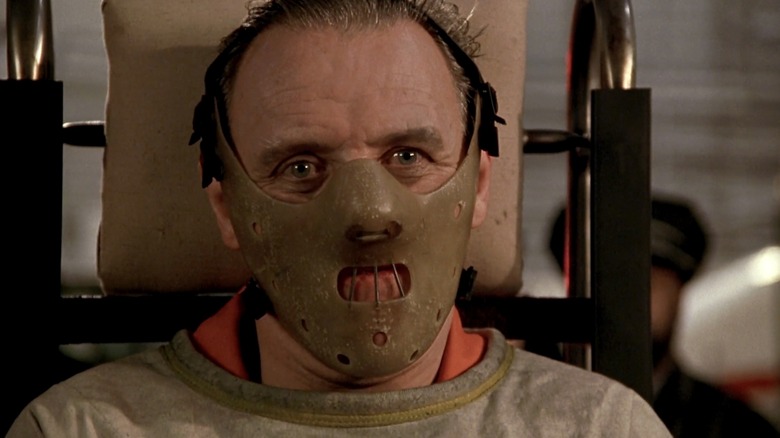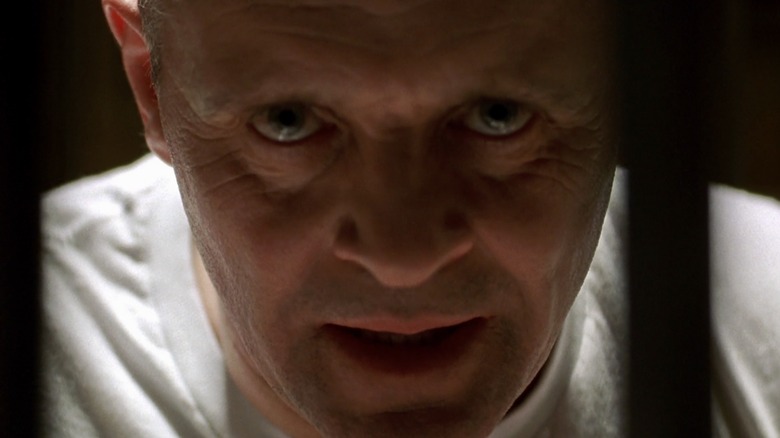The Silence Of The Lambs Proves Less Is More When It Comes To Horror
To date, "The Silence of the Lambs" remains the only horror film to ever win best picture at the Academy Awards. It's a movie in which Hannibal Lecter, one of the greatest screen villains of all time (played by Anthony Hopkins, who won a best actor Oscar for the role), bites and bludgeons guards before stringing one of them up like a death's-head moth and smuggling himself out of the building wearing another's skinned face.
These explosions of violence, however, come late in the movie. For much of its running time, "The Silence of the Lambs" leaves Lecter caged or masked and strait-jacketed. He can only ooze menace in courteous tones as he leers at FBI trainee, Clarice Starling (Jodie Foster), and offers anecdotes from his cannibal past like, "A census taker once tried to test me. I ate his liver with some fava beans and a nice chianti."
Director Jonathan Demme relies more on implied violence and the psychological threat of it than over-the-top gore as in some of the imitative serial killer thrillers that followed. This is something that Hopkins himself observed back in 1991 when "The Silence of the Lambs" was first released. In an interview with Empire, he said:
"Jonathan Demme made it a point to cut away from the really horrible scenes. He didn't focus on a scene where my character slices off somebody's face. He did show in detail an autopsy scene, because that was an important reality. But for the most part, Jonathan just shows you glimpses of violence. He likes to deal much more with psychological terror. Now this I find truly frightening."
'Violence was not that necessary an element'
Demme concurred with Hopkins, saying of his approach:
"Violence was not that necessary an element within the film. The terror is represented through characterization. We'll take Tony Hopkins because he's a perfect example. Here's a character, Lecter, who we know has committed horrific crimes. But Tony gives him this humanity, this compassion. There's a scene in the film where Clarice opens up to him and tells him about a crisis from her past. And Lecter cares. He cares. It makes his character very complicated, and somewhat unpredictable."
The incongruity of Lecter's civil demeanor with the horrific nature of his crimes certainly adds another chilling layer to him as a character. Yet, in addition to elements like this, the performances, and Demme's direction, part of what makes "The Silence of the Lambs" work so well is the dialogue. Screenwriter Ted Tally also won an Oscar for his script which was based on Thomas Harris' novel.
If you think about that "census taker" line, it tells a complete story in two sentences. The audience can picture that whole bit of backstory in their heads. They don't need a flashback that shows it in explicit detail because it already arrives fully formed in their imaginations and lives there, vividly.
Demme realized that this same principle also held true for the scene he mentioned above in which Clarice recounts seeing lambs slaughtered when she was young. Originally, there were to be flashbacks showing those scenes, but Demme realized that the way Foster and Hopkins handled the dialogue one on one made it more powerful.
Though writers are often encouraged to "show, not tell," "The Silence of the Lambs" proves that sometimes less is more and a little telling — without showing — can go a long way.

